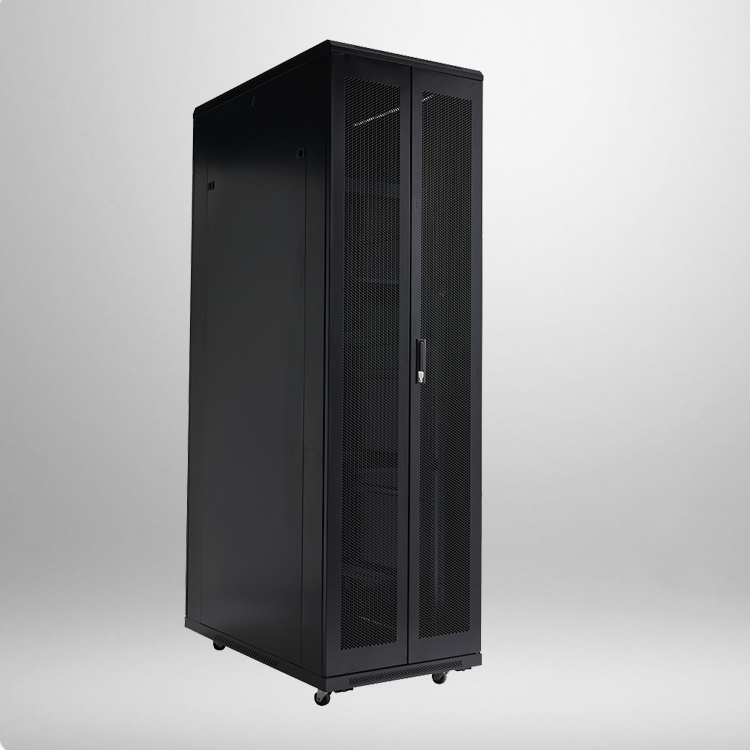
With the ever-increasing demand for technology in all aspects of life, network efficiency has become a top priority for businesses, institutions, and individuals alike. An important aspect of network efficiency is the proper storage and organization of equipment in server cabinets. A well-designed server cabinet can improve network reliability, simplify maintenance and management tasks, and protect valuable equipment from environmental hazards such as dust, heat, and unauthorized access. In this article, we will explore the key features and benefits of server cabinets and provide recommendations for choosing the best cabinet for your needs.
Key Features of Server cabinets, also known as server racks or enclosures, are a specialized kind of storage unit designed to house network equipment such as servers, switches, routers, and power distribution units (PDUs). The most important features of a server cabinet are as follows:
Size: Server cabinets come in a variety of sizes, typically measured in units (U) of height. The most common sizes are 42U, 36U, 24U, and 12U, although smaller and larger cabinets are also available. The size of the cabinet should match the amount and type of equipment you need to store.
Accessibility: The cabinet should allow easy access to equipment for maintenance and repairs. This can be achieved through front and rear doors, removable side panels, and cable management features.
Airflow: Network equipment generates heat, so it is important for the cabinet to provide sufficient ventilation and airflow to keep temperatures within safe limits. This can be achieved through perforated doors and side panels, fans, and in some cases, air conditioning.
Security: The cabinet should protect equipment from theft, tampering, and unauthorized access. This can be achieved through locking doors and side panels, security screws, and other physical security measures.
Grounding: The cabinet should provide a safe and reliable grounding path for equipment, which can reduce the risk of equipment damage and electrical shocks.
Benefits of Server Cabinets A well-chosen server cabinet can offer numerous benefits for network efficiency, including:
Improved equipment organization: A server cabinet can help you keep your equipment organized and easy to find. With a properly designed cabinet, you can group related equipment together, label equipment ports and cables, and keep track of equipment inventory.
Easier maintenance and management: A server cabinet can simplify maintenance and management tasks by providing easy access to equipment. With a properly designed cabinet, you can quickly replace failed equipment, upgrade components, and troubleshoot network issues.
Reduced downtime: A server cabinet can reduce downtime by providing a reliable environment for network equipment. With a properly designed cabinet, you can protect equipment from environmental hazards such as dust, heat, and moisture. This can reduce the risk of equipment failure and downtime.
Improved security: A server cabinet can improve security by protecting equipment from theft, tampering, and unauthorized access. With a properly designed cabinet, you can ensure that only authorized personnel have access to equipment. This can reduce the risk of data breaches and other security incidents.
Recommendations for Choosing a Server Cabinet When choosing a server cabinet, there are several factors to consider. Here are some key recommendations:
Size: Choose a cabinet that is the appropriate size for your equipment needs. Consider not only the amount of equipment you have, but also the size and shape of the equipment.
Accessibility: Choose a cabinet with front and rear doors, removable side panels, and cable management features. This will make it easier to access and maintain equipment.
Airflow: Choose a cabinet with perforated doors and side panels, fans, and in some cases, air conditioning. This will help keep equipment temperatures within safe limits.
Security: Choose a cabinet with locking doors and side panels, security screws, and other physical security measures. This will protect equipment from theft, tampering, and unauthorized access.
Grounding: Choose a cabinet with a safe and reliable grounding path. This will reduce the risk of equipment damage and electrical shocks.
Conclusion A well-designed server cabinet can improve network efficiency, reduce downtime, simplify maintenance and management tasks, and protect valuable equipment from environmental hazards and security threats. By considering the key features and benefits of server cabinets, and following our recommendations for choosing a cabinet, you can maximize your network efficiency and ensure the smooth and reliable operation of your network equipment.


